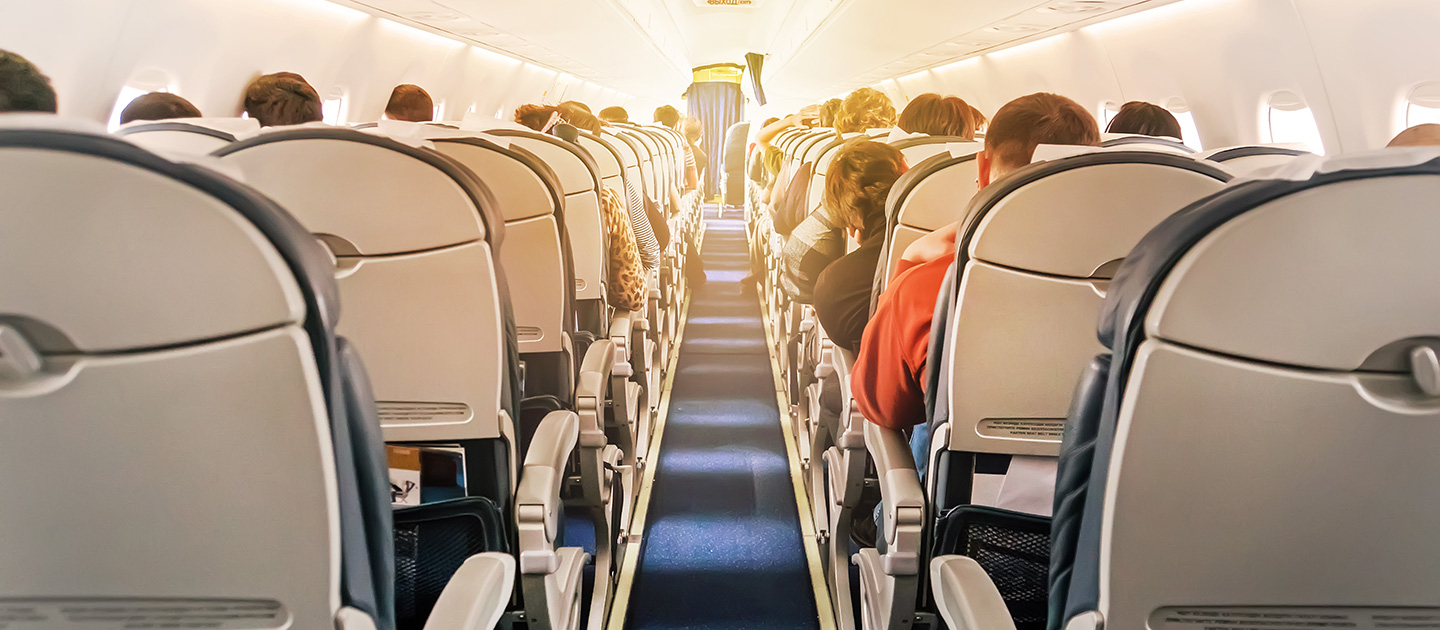Is COVID-19 on Airplane Air Filters?
Researchers don’t know, but they are looking

Ever since the onset of the COVID-19 pandemic, people have become more interested in how well airplane cabins filter and circulate their air.
Now, Northwestern Engineering researchers have launched a new project to explore what, exactly, these air filters actually capture. To kick off the six-month-long project, the team recently received a $217,011 grant from the Walder Foundation.
With this support, the researchers will specifically look for evidence of pathogens, including SARS-CoV-2, on used filters collected from airplanes. If viruses can be found on filters, then filters from international flights could be used as a new way to track when and where viruses enter the country. Rather than testing travelers individually, it might be possible to monitor entire flights with one test.

“These high-performance filtration systems are designed to capture particulates,” said the McCormick School of Engineering’s Erica M. Hartmann, who leads the project. “But, so far, it’s largely unknown whether or not we can find viruses on filters from airplanes. We want to discover if this can be done and, if it can, how this information could broaden our current surveillance efforts.”
An expert on indoor microbiomes, Hartmann is an assistant professor of civil and environmental engineering at Northwestern Engineering.
For this work, Hartmann has partnered with the Discovery Partners Institute to obtain airplane cabin filter samples. The first step is to learn whether or not it’s possible to detect pathogens on filters. If it is possible, then Hartmann says it’s important to assess if it’s feasible to collect and sample filters after each flight.
Air travel isn’t bad, and it’s not the reason people get sick. But we have to acknowledge that in our globally connected world, it’s important to understand how diseases spread in order to prevent the next pandemic. Assistant Professor of Civil and Environmental Engineering
“If we can only look at filters every six months, for example, then that’s ultimately not informative,” Hartmann said. “By then, it’s too late. The virus has already spread from that point. And if it costs too much to evaluate a sample, then that won’t work either.”
But, given the vast importance of understanding how global pandemics spread, Hartmann believes it’s worth the effort to evaluate whether or not proactively analyzing filters could potentially play a role.
If transportation and public health officials could pinpoint exactly when a person carrying a virus entered the country, for example, that could work as an early warning system — alerting arrival cities to increase testing and implement quarantines to limit the spread as soon as possible.
“Transmissible diseases are exactly that — they are transmitted from person to person,” Hartmann said. “So the more we travel, the more we interact with more people. Air travel isn’t bad, and it’s not the reason people get sick. But we have to acknowledge that in our globally connected world, it’s important to understand how diseases spread in order to prevent the next pandemic.”